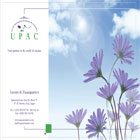

M a r k e t N e w s
Kenya, Uganda and Tanzania closer to ending maize disease
Posted on : Monday, 29th August 2016
East Africa is inching closer to eradicating Maize Lethal Necrosis (MLN) with a variety of seeds that can tolerate and resist the disease undergoing national performance trials in Kenya, Uganda and Tanzania to be ready for planting in 2018.
Scientists at the International Maize and Wheat Improvement Centre in conjunction with the Kenya Agricultural Livestock and Research Organisation have several promising inbred lines and pre-commercial hybrids with resistance to MLN in Naivasha, Kenya.
“Our vision of replacing a large set of commercial MLN-susceptible varieties with MLN-resistant hybrids is well on track. In three or four years, we hope to have at least 20 to 25 MLN-resistant hybrids released, scaled up and delivered to farmers in East Africa with the help of our seed company partners,” stated B.M. Prasanna, director of CIMMYT’s Global Maize Programme and the CGIAR Research Programme Maize.
They hope that using molecular marker assisted breeding, the more than 25 elite inbred lines that are susceptible to MLN but are parental lines of several prominent commercial maize hybrids in sub-Saharan Africa, will combat the lethal disease.
Farmers in the region have since 2011 been seeing massive losses caused by MLN with Kenya incurring a loss of Ksh4.1 billion ($41 million) in 2014 alone, as the disease wiped out crops across the country.
Maize is the main staple food for several millions of families in East Africa, with Uganda being the only East African country that produces more maize than it consumes.
Uganda produces about 2.7 million tonnes of maize a year against a demand of 1.5 million tonnes. The surplus is sold to South Sudan, Tanzania and Kenya.
Scientists have recommended several measures to curb the transmission of the virus, which is spread over long distances by beetles, thrips and leaf hoppers, especially windy conditions.
Crop rotation and diversification into other crops are some of the solutions being proposed to reduce losses but farmers are reluctant to change, arguing that other crops are not as lucrative as maize.
The disease causes an estimated 30–100 per cent crop loss in farmers’ fields, depending on the severity of the attack, and is also threatening to affect regional trade.
The disease has been reported in Mwanza, Tanzania and in some districts in eastern Uganda, particularly Busia and Tororo. In Kenya, it has been reported in South Rift and the major grain belts of Uasin Gishu, Trans-Nzoia and Nandi Counties.
The disease presents itself as severe chlorosis, which is yellowing of leaves, vein banding and mottling of the leaves and cobs which lead to premature drying of the crop , even if the plant appears to have no disease or symptoms.
In addition, there is a failure to tassel (sterility) in male plants as there is no pollen shed on grains. Necrosis and leaf redding may also be observed in some plants.
Source : www.theeastafrican.co.ke





























































